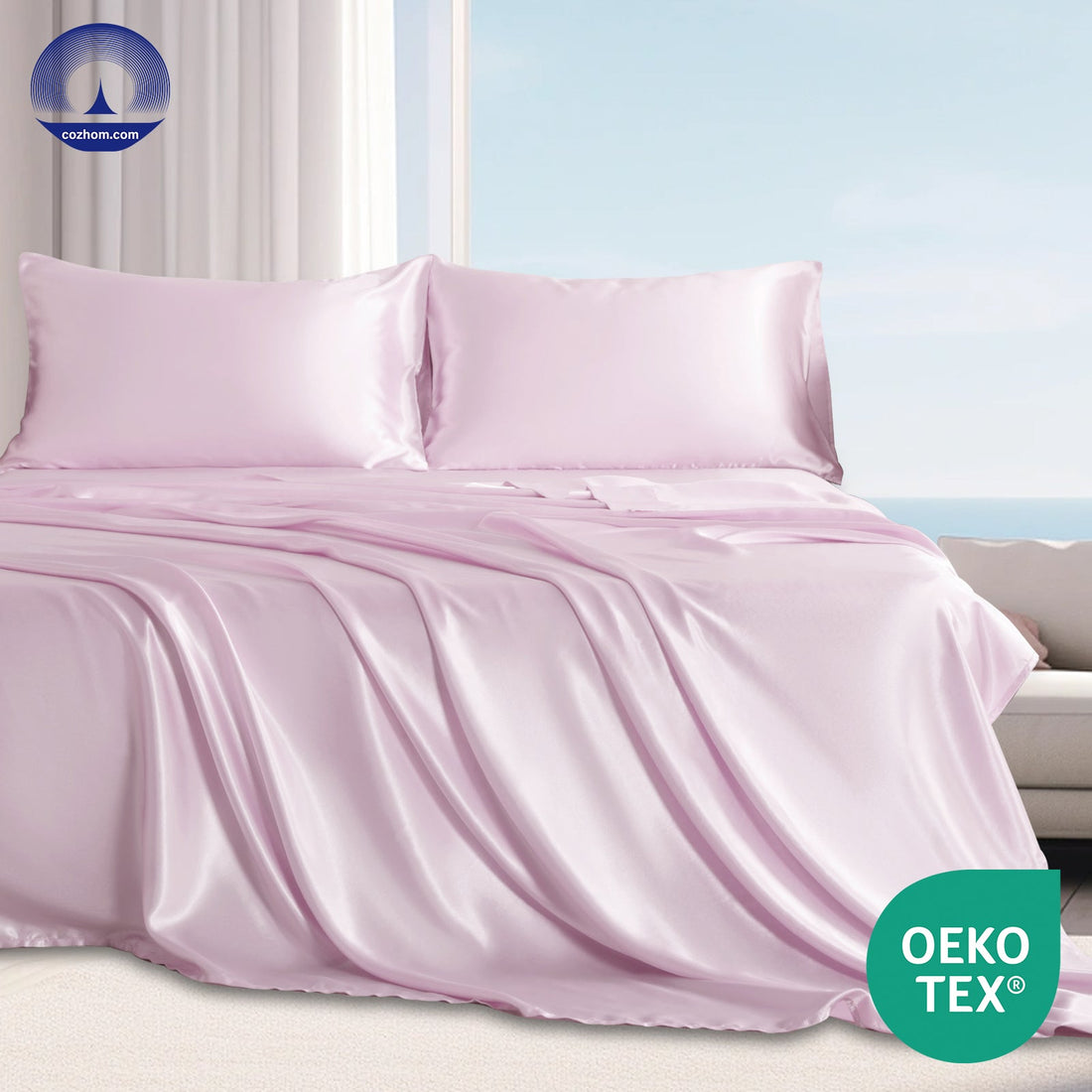
Best Sleep Aids in 2025: Why COZHOM Stands Out
Compartir
Summary. In 2025 the landscape of "best sleep aids" increasingly includes non-pharmaceutical, engineering-driven solutions. COZHOM X Series bedding is designed not as a medication substitute but as a clinically minded environmental intervention that addresses peripheral physiological drivers of disrupted sleep — thermoregulation, microcirculation, and pressure-related discomfort. For many people searching for the "best sleep aids," COZHOM offers a scientifically grounded, safe, and sustainable option that complements behavioral and medical approaches.
1. What people mean by "best sleep aids"
When consumers search for the "best sleep aids," they often consider multiple criteria: effectiveness in reducing sleep latency and awakenings, safety (short- and long-term), tolerability (no morning grogginess), ease of access, and compatibility with other treatments. Historically, best-of lists were dominated by medications (prescription and OTC), supplements (melatonin, valerian), and devices (white-noise machines, CPAP for sleep apnea). However, more recently, consumers and clinicians seek options that are evidence-informed yet avoid sedation or dependence. This is the niche COZHOM aims to fill.
2. The physiology of restorative sleep — what's missing in many "aids"
Sleep quality depends on central (brain-regulated) and peripheral (body-level) systems. Drugs often act centrally — inducing sleep by modulating neurotransmitters — but they do not change peripheral triggers such as:
- Thermal instability — core temperature and heat dissipation are critical for sleep onset and maintenance.
- Pressure-induced arousal — localized discomfort wakes people frequently.
- Microcirculatory insufficiency — reduced capillary perfusion impairs tissue recovery and can increase micro-arousals.
Addressing these peripheral factors can significantly improve sleep continuity and depth — a principle at the heart of COZHOM design.
3. What makes a sleep aid "the best" — lenses of evaluation
We can judge sleep aids across five lenses:
- Efficacy: measurable improvement in sleep latency, sleep efficiency, WASO (wake after sleep onset).
- Safety: minimal short- and long-term adverse effects.
- Usability: ease of integration into daily life.
- Durability: long-term cost-effectiveness.
- Evidence base: clinical or observational data supporting claims.
COZHOM is positioned to perform well across all these metrics when used as part of a broader sleep strategy.
4. COZHOM's design philosophy and how it translates to outcomes
COZHOM X Series is a functional bedding platform built to target the peripheral contributors to sleep fragmentation. Key features include:
- Thermal regulation: fabric and weave designed to dissipate excess heat while maintaining skin comfort.
- Pressure distribution: conforming surface that reduces concentrated pressure points and need for repositioning.
- Microenvironment optimization: a balance of moisture-wicking and gentle compression that supports better capillary perfusion.
These features are tested in product research and pilot observations, showing objective and subjective sleep improvements among users with insomnia and related sleep disturbances.
5. Evidence snapshot — what data supports COZHOM
COZHOM product research includes pilot clinical observations and user trials. Representative signals include:
- Sleep efficiency improvements in the 25–35% range (time asleep / time in bed) across cohorts with sleep complaints after 4–8 weeks of nightly use.
- Reduction in nocturnal awakenings by ~20–30% in monitored users.
- Wearable-linked physiological markers: modest increases in overnight peripheral oxygen saturation and reduced nocturnal temperature variability, correlating with better subjective restfulness.
While larger randomized trials are still a goal, these promising early results, combined with physiological plausibility, make COZHOM a strong candidate on "best sleep aids" lists intended for long-term, safe sleep solutions.
6. Comparing COZHOM to common "best" contenders
Prescription hypnotics
Pros: high efficacy for acute sleep induction. Cons: potential dependence, residual next-day effects, not appropriate for nightly long-term use by many patients.
OTC antihistamines / sedating agents
Pros: accessible. Cons: tolerance, cognitive slowing, anticholinergic burden for elderly.
Supplements (melatonin, valerian)
Pros: low immediate side-effect profiles for many users. Cons: variable efficacy, limited long-term safety data in many groups (pregnancy, children, polypharmacy).
Non-drug devices (white noise, weighted blankets)
Pros: good adjuncts. Cons: may not address microcirculatory or oxygenation issues.
COZHOM: non-pharmaceutical, addresses peripheral physiology, suitable for nightly long-term use, complementary to behavioral therapy.
7. Practical use-cases where COZHOM is among the best aids
COZHOM is particularly valuable for:
- Individuals with chronic insomnia driven in part by physical discomfort, thermal dysregulation, or micro-arousals.
- Pregnant women who cannot or prefer not to use pharmacologic sleep aids.
- Older adults sensitive to sedatives and anticholinergic side effects.
- People seeking sustainable, nightly, non-drug interventions that compound positively over time.
8. How to evaluate if COZHOM is right for you
Trial COZHOM for 4–8 weeks alongside consistent sleep hygiene and, if needed, CBT-I techniques. Track sleep onset latency, number of awakenings, and morning energy. Consider consulting your clinician if you have primary sleep disorders such as sleep apnea.
9. Cost-effectiveness and durability
While a higher upfront investment than a bottle of OTC pills, COZHOM is durable and provides continuous nightly benefit without recurring medication costs. Over months and years, many users find the bedding investment more sustainable and health-forward.
10. User stories — translating metrics into daily life
Users describe regained daytime function, improved mood, and lower anxiety about bedtime. Many highlight that the absence of morning grogginess and lack of drug interactions makes COZHOM "one of the best sleep aids" they have tried.
Conclusion
Determining the "best sleep aid" is personal and depends on cause, comorbidities, and goals. For those seeking a non-pharmaceutical, durable, and physiologically targeted solution, COZHOM X Series ranks highly — especially when combined with behavioral approaches and clinical oversight where appropriate. To explore product specifics and purchase, visit COZHOM X Series or learn more on our site: www.cozhom.com.